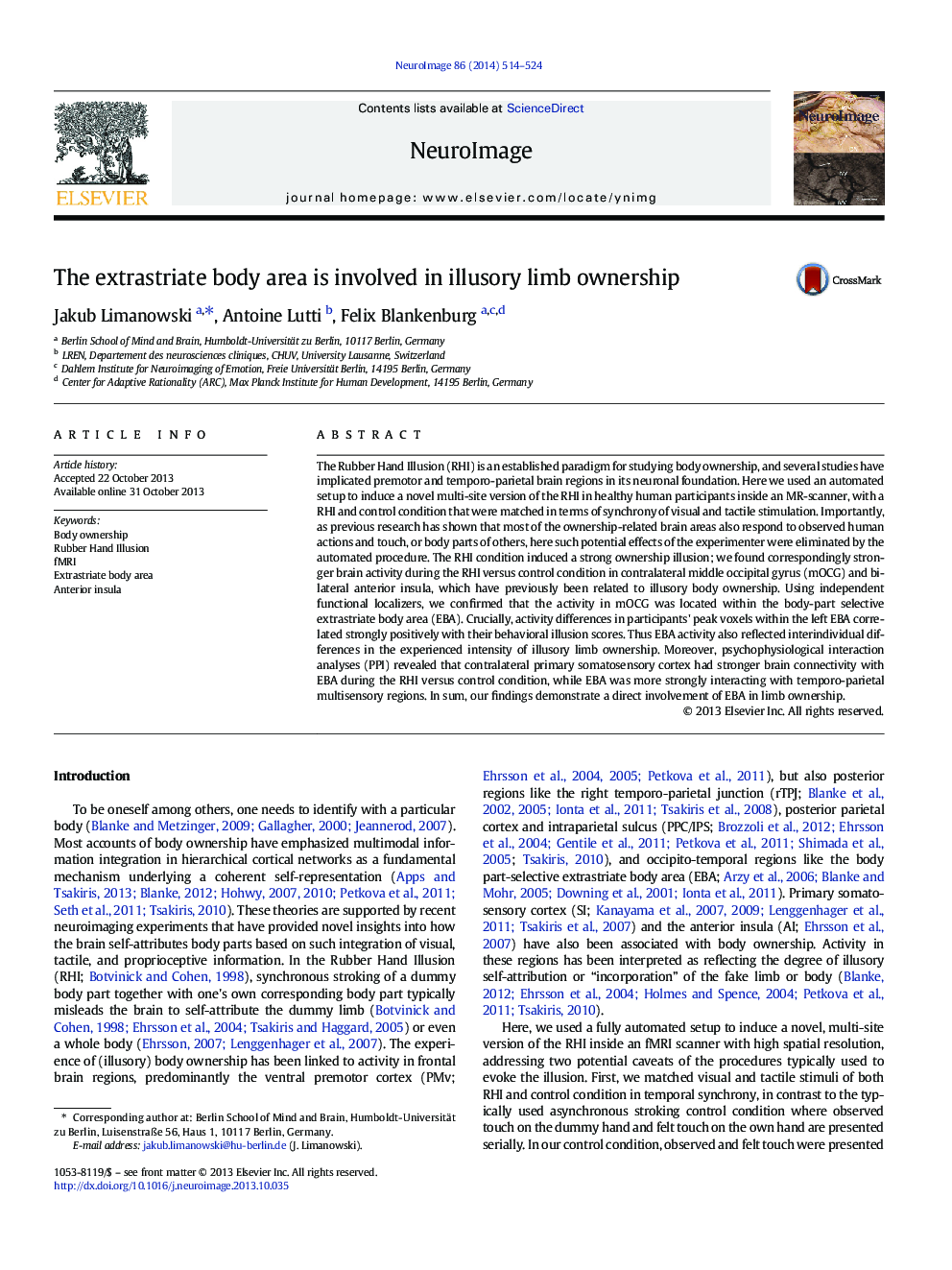| Article ID | Journal | Published Year | Pages | File Type |
|---|---|---|---|---|
| 6027850 | NeuroImage | 2014 | 11 Pages |
Abstract
The Rubber Hand Illusion (RHI) is an established paradigm for studying body ownership, and several studies have implicated premotor and temporo-parietal brain regions in its neuronal foundation. Here we used an automated setup to induce a novel multi-site version of the RHI in healthy human participants inside an MR-scanner, with a RHI and control condition that were matched in terms of synchrony of visual and tactile stimulation. Importantly, as previous research has shown that most of the ownership-related brain areas also respond to observed human actions and touch, or body parts of others, here such potential effects of the experimenter were eliminated by the automated procedure. The RHI condition induced a strong ownership illusion; we found correspondingly stronger brain activity during the RHI versus control condition in contralateral middle occipital gyrus (mOCG) and bilateral anterior insula, which have previously been related to illusory body ownership. Using independent functional localizers, we confirmed that the activity in mOCG was located within the body-part selective extrastriate body area (EBA). Crucially, activity differences in participants' peak voxels within the left EBA correlated strongly positively with their behavioral illusion scores. Thus EBA activity also reflected interindividual differences in the experienced intensity of illusory limb ownership. Moreover, psychophysiological interaction analyses (PPI) revealed that contralateral primary somatosensory cortex had stronger brain connectivity with EBA during the RHI versus control condition, while EBA was more strongly interacting with temporo-parietal multisensory regions. In sum, our findings demonstrate a direct involvement of EBA in limb ownership.
Related Topics
Life Sciences
Neuroscience
Cognitive Neuroscience
Authors
Jakub Limanowski, Antoine Lutti, Felix Blankenburg,
